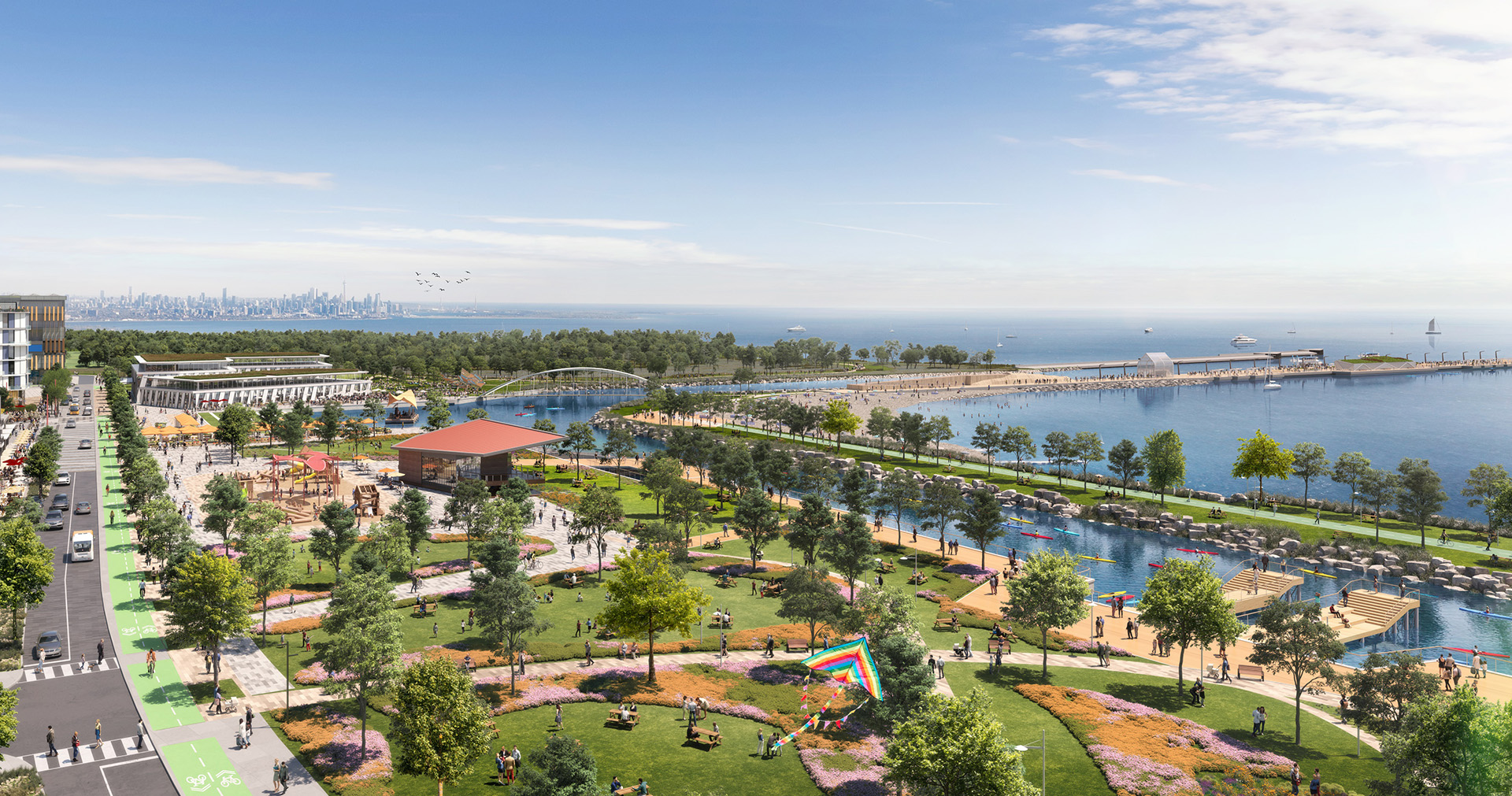Innovation & Sustainability
Canada's Most Extensive Low-Impact Development on the Waterfront

Innovation & Sustainability

Lakeview Village is transforming the idea of what a sustainable community can look like. As the most extensive low-impact development (LID) in Canada, and with shoreline access to Lake Ontario, it's a project that shows how urbanity can coexist with nature thanks to an investment in and focus on innovation.
"We know that people want more than concrete spaces - they want green surroundings and cleaner water. Lakeview Village will show that sustainable design can provide all of these benefits while making our urban spaces more liveable and environmentally responsible,” says Brian Sutherland, a Vice President at ARGO Development Corp. and lead development planner for Lakeview Community Partners Limited.
In other words, Lakeview Village won’t be like any other development – it will be a blueprint for building a resilient, eco-friendly community that will benefit multiple generations to come. Here’s how the team plans to do that.
LID is about designing urban spaces to work with nature’s processes. In most cities, rainwater is funneled into storm drains, often leading to polluted waterways and flooding, especially during heavy rains, as was common in the summer of 2024. Unlike traditional stormwater systems, LID uses natural features - like permeable pavements, bioretention cells, rain gardens, and green roofs - to absorb, filter, and treat rainwater where it falls. It’s about creating connections between blue (water) and green (parks) spaces.
At Lakeview Village every feature will have a purpose, for example:
“By integrating green and blue spaces, we’re building a healthier, more resilient environment that enhances quality of life for everyone who lives and visits here,” says Brian. “Our focus is to build a community that aligns with the environment, supports residents, and sets a new standard for sustainable urban living. We're not taking the conventional route; we're bringing innovative ideas and early thinking on blue and green networks to life.”
It is more than just a choice to build sustainably—it’s a commitment to creating cities and communities that prioritize beauty, healthier landscapes, and comfort. It’s a choice that responds to climate change and elevates urban design to create better living conditions for all.
LID systems significantly reduce water pollution by filtering stormwater through natural layers, removing pollutants like oil, sediment, and heavy metals before they reach land or waterways - a process that, according to the University of Vermont, can cut water pollution by up to 80 per cent. Beyond improving water quality, green infrastructure also supports biodiversity by providing habitats for plants, birds, and insects, enhancing ecosystem health and the aesthetic appeal of urban areas.
With extreme weather events becoming the norm, flooding is a growing concern for urban areas. LID helps manage rainfall by letting water soak into the ground, which reduces the risk of overwhelming municipal storm systems. The World Bank estimates that sustainable water management strategies can reduce flood damage costs by up to 30 per cent.
Because LID doesn't require large retention ponds, it frees up land for parks, recreational areas, and natural habitats and enhances the pedestrian experience. Plants also help act as natural filters of contaminated runoff and water. Cities that prioritize green space enjoy better public health outcomes, improved air quality, and higher property values.
Green roofs, trees, and permeable surfaces help combat the urban heat island effect by absorbing less heat than traditional concrete infrastructure. Studies have even shown leveraging these elements in a LID can reduce air temperatures by up to 1 to 2° Celsius, something that’s critically important as temperatures climb in response to climate change.
You might wonder why this kind of development is important. It's simple: as cities grow and more buildings go up, the amount of concrete and pavement increases, creating ”hard landscapes or “concrete jungles” and making it harder for water to soak into the ground. Traditional stormwater systems may then get overwhelmed, leading to flooding and pollution. But LID changes the game by using nature’s way to filter and clean water in a way that's sustainable and effective. According to Water Canada, LID can reduce water pollution by up to 80 per cent in some cases. It also reduces strain on public infrastructure, saves cities money, and helps build resilience against climate change.
That's a huge impact, not just for the environment but for everyone living in a LID community. By managing water as nature would, Lakeview Village will take pressure off public infrastructure and ensure the neighbourhood is prepared for climate challenges ahead.
By embracing LID, Lakeview Village is set to become a project that protects Lake Ontario, enhances the quality of life for residents, and supports the City of Mississauga’s sustainability goals. But beyond the environment, the LID approach at Lakeview Village will enhance community spaces. Residents will enjoy access to trails, parks, and waterfront areas that would otherwise be occupied by traditional stormwater infrastructure. The project will create a greener, healthier, and more livable environment - one that other cities across Canada will likely look to as an example of how urban development can build resilience in and sustainable practices combination with landscape design into a community. It’s, quite simply, a game changer.
“This project is setting a new standard for urban sustainability in Canada. Lakeview Village is showing that cities can manage water responsibly, support local ecosystems, and create a community where people feel connected to nature," adds Brian. "Lakeview Village is more than a local project - it’s a model for how we can build resilient, sustainable communities across Ontario. By prioritizing green infrastructure and smart water management, we’re creating a destination that supports both the natural environment and the long-term health of our urban spaces, benefiting Mississauga, the GTA, and beyond."